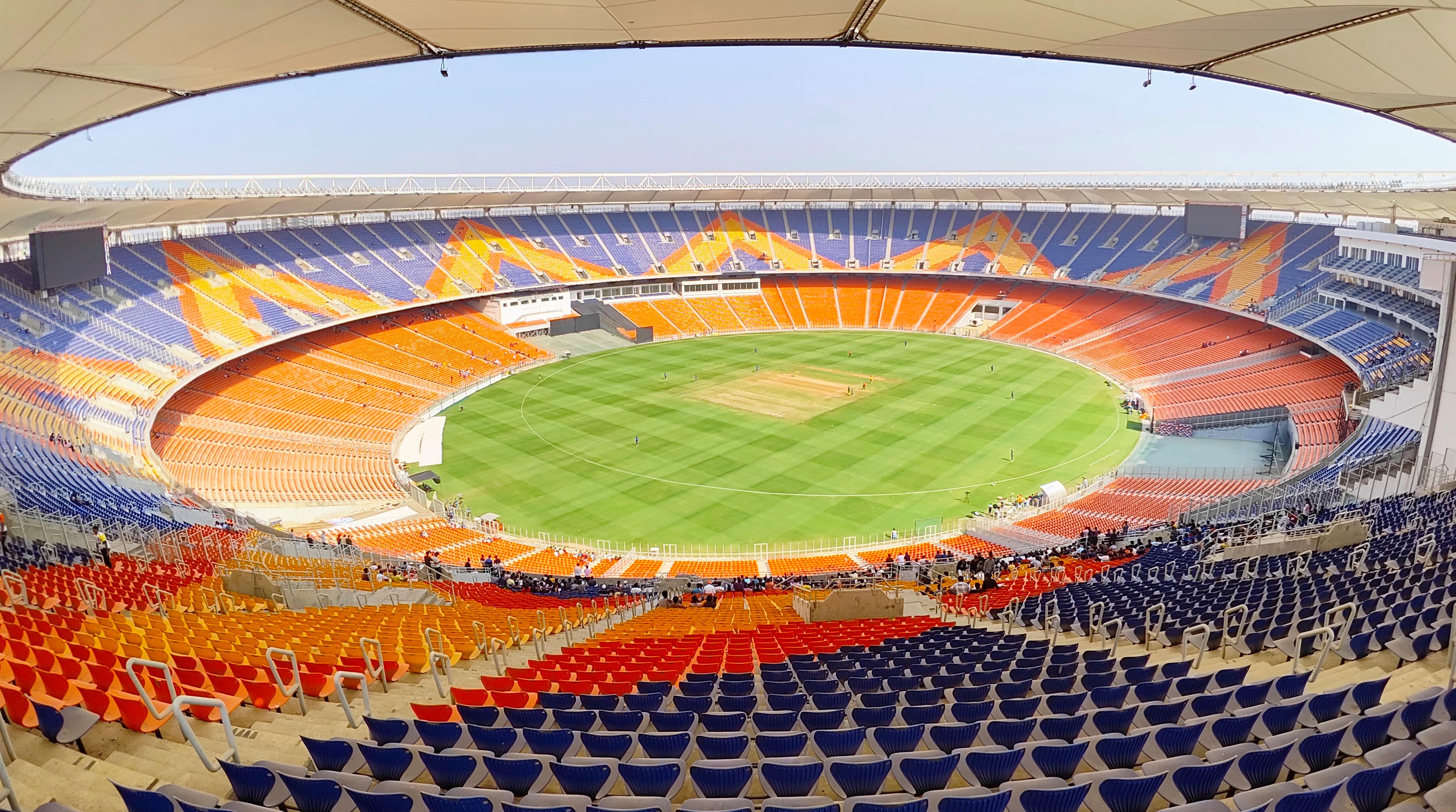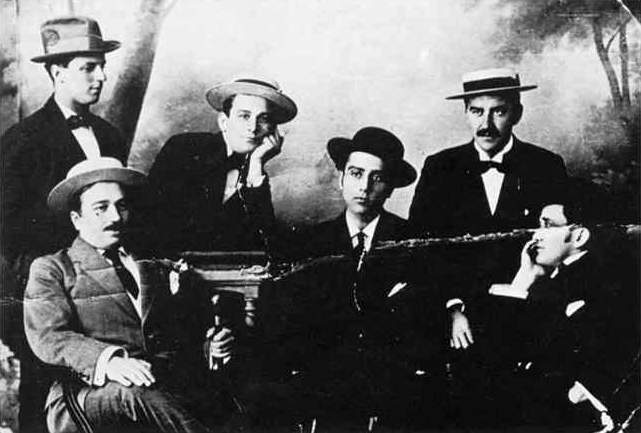|
Stadion Slavko Maletin Vava
Slavko Maletin Vava Stadium is a football stadium in Bačka Palanka, Serbia. Its tenant is OFK Bačka. The stadium has the capacity to hold 4,000 spectators. History The stadium was officially inaugurated on 7 July 1951. The first ground of Bačka was next to the old railway station. As the club popularity grew, the stadium was relocated to the city center where it still stands. The stadium is named after Slavko Maletin Vava, a former player of Bačka in the 60s and early 70s of the 20th century. Description The stadium has a capacity for 4,000 spectators. The west Stand was completely covered and all of the sitting. The east Stand was standing and is not covered. The stadium is located in the exclusive area. On 20-odd meters from the stadium is the town center and pedestrian zone . Largest attended Bačka Stadium has always usually been well attended. The largest attendance in the stadium of Bačka was on 12 March 1969, when Bačka played against Split Hajduk in the quarter-f ... [...More Info...] [...Related Items...] OR: [Wikipedia] [Google] [Baidu] |
Bačka Palanka
Bačka Palanka ( sr-cyrl, Бачка Паланка, ; ) is a town and municipality located in the South Bačka District of the autonomous province of Vojvodina, Serbia. It is situated on the left bank of the Danube. In 2022 the town had a total population of 25,476, while Bačka Palanka municipality had 48,265 inhabitants. Name In Serbian language, Serbian, the town is known as Бачка Паланка or ''Bačka Palanka'', in Slovak language, Slovak as ''Báčska Palanka'', in Croatian language, Croatian as ''Bačka Palanka'', in Hungarian language, Hungarian as ''Bácspalánka'', in German language, German as ''Plankenburg'' and in Turkish language, Turkish as ''Küçük Hisar''. Its name means "a town in Bačka" in Serbian language, Serbian. The word "Palanka (fortification), palanka" itself originates from Turkish language. This word was also adopted by Serbs and it is used in the Serbian language with the same meaning. Older Serbian names for this town were Palanka (П ... [...More Info...] [...Related Items...] OR: [Wikipedia] [Google] [Baidu] |
Serbia
, image_flag = Flag of Serbia.svg , national_motto = , image_coat = Coat of arms of Serbia.svg , national_anthem = () , image_map = , map_caption = Location of Serbia (green) and the claimed but uncontrolled territory of Kosovo (light green) in Europe (dark grey) , image_map2 = , capital = Belgrade , coordinates = , largest_city = capital , official_languages = Serbian language, Serbian , ethnic_groups = , ethnic_groups_year = 2022 , religion = , religion_year = 2022 , demonym = Serbs, Serbian , government_type = Unitary parliamentary republic , leader_title1 = President of Serbia, President , leader_name1 = Aleksandar Vučić , leader_title2 = Prime Minister of Serbia, Prime Minister , leader_name2 = Đuro Macut , leader_title3 = Pres ... [...More Info...] [...Related Items...] OR: [Wikipedia] [Google] [Baidu] |
OFK Bačka
OFK Bačka (Serbian Cyrillic: ОФК Бачка) is a football club based in Bačka Palanka, Serbia, that competes in the Serbian League Vojvodina. In 2016, the club achieved promotion to the Serbian SuperLiga. It is known as one of the most successful football clubs in Serbia at the all-time table of the Yugoslav Second League. Origins and rise The club was founded in 1945 and plays in the stadium Stadion Slavko Maletin Vava, capacity of 2,500, which was officially inaugurated on 7 July 1951. In 1959, Bačka achieved promotion to the Yugoslav Second League group East, but, at the end of the 1959–60 season, ended up being relegated. However, a bright sign was that Bačka striker Petar Remete became league top-scorer in 1960. Bačka returned to Second League in the 1961–62 season and this time stayed in the national second level for 14 consecutive years. [...More Info...] [...Related Items...] OR: [Wikipedia] [Google] [Baidu] |
Association Football
Association football, more commonly known as football or soccer, is a team sport played between two teams of 11 Football player, players who almost exclusively use their feet to propel a Ball (association football), ball around a rectangular field called a Football pitch, pitch. The objective of the game is to Scoring in association football, score more goals than the opposing team by moving the ball beyond the goal line into a rectangular-framed Goal (sport), goal defended by the opposing team. Traditionally, the game has been played over two 45-minute halves, for a total match time of 90 minutes. With an estimated 250 million players active in over 200 countries and territories, it is the world's most popular sport. Association football is played in accordance with the Laws of the Game (association football), Laws of the Game, a set of rules that has been in effect since 1863 and maintained by the International Football Association Board, IFAB since 1886. The game is pla ... [...More Info...] [...Related Items...] OR: [Wikipedia] [Google] [Baidu] |
Stadium
A stadium (: stadiums or stadia) is a place or venue for (mostly) outdoor sports, concerts, or other events and consists of a field or stage completely or partially surrounded by a tiered structure designed to allow spectators to stand or sit and view the event. Pausanias noted that for about half a century the only event at the ancient Greek Olympic festival was the race that comprised one length of the stadion at Olympia, where the word "stadium" originated. Most of the stadiums with a capacity of at least 10,000 are used for association football. Other popular stadium sports include gridiron football, baseball, cricket, the various codes of rugby, field lacrosse, bandy, and bullfighting. Many large sports venues are also used for concerts. Etymology "Stadium" is the Latin form of the Greek word " stadion" (''στάδιον''), a measure of length equalling the length of 600 human feet. As feet are of variable length the exact length of a stadion depends on the ex ... [...More Info...] [...Related Items...] OR: [Wikipedia] [Google] [Baidu] |
HNK Hajduk Split
Hrvatski Nogometni klub Hajduk Split, commonly referred to as Hajduk Split (), is a Croatian professional Association football, football Football team, club based in Split, Croatia, Split, that competes in the Croatian First Football League, Croatian First League, the top tier in Croatian football. Since 1979, the club's home ground has been the 33,987-seater Stadion Poljud. The team's traditional home colours are white shirts with blue shorts and blue socks. The idea to form a football club was started by a group of Split students who were studying in Prague. After observing a game between SK Slavia Prague, Slavia and AC Sparta Prague, Sparta Prague, the group gathered at the U Fleků tavern and talked of creating a football club at home. When they returned to Split, they put their plan in motion and Hajduk was founded on 13 February 1911. Between the early 1920s and 1940, Hajduk regularly participated in the Kingdom of Yugoslavia Yugoslav First League, national championship. Fo ... [...More Info...] [...Related Items...] OR: [Wikipedia] [Google] [Baidu] |
Yugoslav Cup
The Yugoslav Cup (; ; , ), officially known between 1923 and 1940 as the King Alexander Cup (; , and between 1947 and 1991 as the Marshal Tito Cup (; ; ; ), was one of two major association football, football competitions in Socialist Federal Republic of Yugoslavia, Yugoslavia, the other one being the Yugoslav League Championship. The Yugoslav Cup took place after the league championships when every competitive league in Yugoslavia had finished, in order to determine which teams are ranked as their corresponding seeds. The Marshal Tito Cup trophy was based on a design by Branko Šotra. Kingdom of Yugoslavia (1923–1941) The pre-WW II competition in the then Kingdom of Slovenes, Croats and Serbs (renamed Kingdom of Yugoslavia at the end of 1929) was held irregularly, and sometimes involved only regional selections, sometimes only clubs, and occasionally both clubs and regions. Between 1924 and 1927 the competition consisted of squads from the regional subassociations.Fudbal u Kr ... [...More Info...] [...Related Items...] OR: [Wikipedia] [Google] [Baidu] |
List Of Stadiums In Serbia
The following is a list of Association football, football stadiums in Serbia, in order by capacity. The capacities listed are Seating capacity, seating capacities, which means the potential number of spectators the stadiums can accommodate in non-seated stands are not listed. The minimum capacity is 2,000. Current stadiums Bold: Teams competing in the Serbian SuperLiga Over 15,000 capacity Under 15,000 capacity Under 5,000 capacity Stadiums under construction Proposed stadiums See also *Football in Serbia *List of European stadiums by capacity *List of stadiums in Europe *List of association football stadiums by capacity *List of association football stadiums by country *List of sports venues by capacity *List of stadiums by capacity *Lists of stadiums References {{List of football stadiums in Europe Football venues in Serbia, Lists of association football stadiums, Serbia Football in Serbia lists, stadiums Lists of buildings and structures in Serbia, Fo ... [...More Info...] [...Related Items...] OR: [Wikipedia] [Google] [Baidu] |
Football Venues In Serbia
Football is a family of team sports that involve, to varying degrees, kicking a ball to score a goal. Unqualified, the word ''football'' generally means the form of football that is the most popular where the word is used. Sports commonly called ''football'' include association football (known as ''soccer'' in Australia, Canada, South Africa, the United States, and sometimes in Ireland and New Zealand); Australian rules football; Gaelic football; gridiron football (specifically American football, arena football, or Canadian football); International rules football; rugby league football; and rugby union football. These various forms of football share, to varying degrees, common origins and are known as "football codes". There are a number of references to traditional, ancient, or prehistoric ball games played in many different parts of the world. Contemporary codes of football can be traced back to the codification of these games at English public schools during the 19th ce ... [...More Info...] [...Related Items...] OR: [Wikipedia] [Google] [Baidu] |






